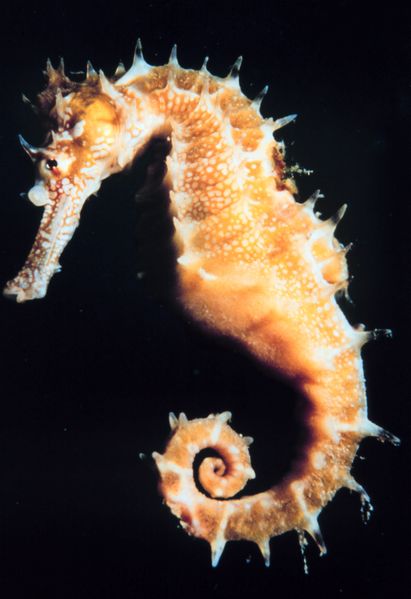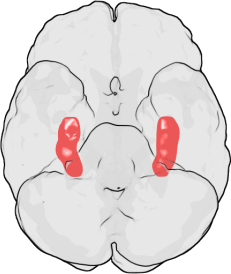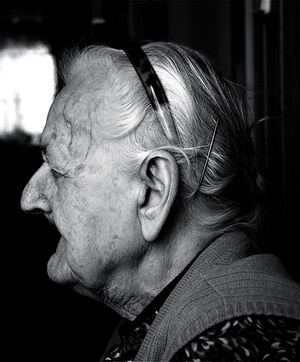Mapping navigation in the brain
Interview with
Professor John O'Keefe discusses how researchers are combining virtual reality and treadmills to map navigation in the brain.
Hannah - Kicking off the programme, let's map our way around the brain. Arguably, the most important structure for navigation is the hippocampus. So, let's kick start with some facts about it.
The hippocampus is buried deep within your brain. It's shaped like a  seahorse which is why it's called the hippocampus from the Greek meaning curved horse, and there's one hippocampus on each side of the brain. Each one is just smaller than the size of your curled little finger, and each one is packed with about 40 million nerve cells. Each of these cells can be connected with up to 10,000 others, so it's essentially a very complicated circuit board sending spikes of electrical information in the region and to other parts of the brain. Why does it do this? To help you find your way around the world, learn your place in it and let you process where you want to go.
seahorse which is why it's called the hippocampus from the Greek meaning curved horse, and there's one hippocampus on each side of the brain. Each one is just smaller than the size of your curled little finger, and each one is packed with about 40 million nerve cells. Each of these cells can be connected with up to 10,000 others, so it's essentially a very complicated circuit board sending spikes of electrical information in the region and to other parts of the brain. Why does it do this? To help you find your way around the world, learn your place in it and let you process where you want to go.
But how exactly do all of these cells work together to do this? I spoke to Professor John O'Keefe from University College London......
John - What's happening now, and what's very exciting in the field, is that we're now beginning to gain the tools (to study navigation). With an artificial virtual reality environment we can begin to assess exactly what cues and what stimuli in the environment are causing the cells to fire in particular places. So, we're optimistic that in the near future, coupling virtual reality environments to new recording techniques, we'll be able to record from large numbers of cells and to see how the cells are interacting with each other.
 Hannah - So, we've got particular cells and they all seem to work together in order for us to have an idea of where we are and even where we may want to go. What signals are coming into the brain in order to help change the activity of those cells? Are there particular things like reward or pleasure that might affect those cells in the hippocampus?
Hannah - So, we've got particular cells and they all seem to work together in order for us to have an idea of where we are and even where we may want to go. What signals are coming into the brain in order to help change the activity of those cells? Are there particular things like reward or pleasure that might affect those cells in the hippocampus?
John - That's a very good question and there is not simple answer. The hippocampus is located very far away from the sensory inputs and is quite a bit away from the motor outputs. We do know anatomically that it receives information from many different areas of the sensory, neocortex and under certain circumstances, it's been demonstrated that the cells are capable of using any combination of sensory inputs that are available to the animal.
Hannah - And is the hippocampal formation made up of other cells? They're not just these navigation to cells. Are there other cells in the hippocampus?
John - So that's a contentious question and over the years, there have been reports that there are other cell types in the hippocampus. However, if you take an animal, put it into a succession of different environments, you will find that there are cells in the second environment which didn't respond in the first environment. And there are cells in the third environment which didn't respond in the first two environments. So that when you place the animal into a multitude of environments and certainly, by the time you placed into say, 6 or 7 environments, you will find that the majority of cells in the hippocampus have a place response location field in one of those environments.
Hannah - So, if the majority of these cells within the hippocampal  formation are involved in spatial navigation and people with Alzheimer's for example, find it very difficult to navigate their way around, particularly, new environments and they have less connections between cells in the hippocampus, and they also have cell death in this region. Could this be a reason why?
formation are involved in spatial navigation and people with Alzheimer's for example, find it very difficult to navigate their way around, particularly, new environments and they have less connections between cells in the hippocampus, and they also have cell death in this region. Could this be a reason why?
John - Well, yes. There are two questions really that you're asking. One is, what's the relationship between the human hippocampus and the animal hippocampus? And the other is, how much of the human hippocampus is involved in functions similar to say, those in the hippocampus in the rat? And the story isn't a simple one. It's clear that in humans, the hippocampus is involved in other types of memory and other types of processes in addition to special processes.
Our own thinking, and I guess the simplest way of characterising this is that the human hippocampus is involved in what we call episodic memory. That is the memory for what you did at a particular time in a particular place. Now, our own thinking is that this is an extension of the special functions of the animal hippocampus. So, as well as being primarily a spatial memory system also processes information about the time at which the animal went into the location and what it did in that location. If you put those together, you have the beginnings of what we would call - if we were looking at the human memory - an episodic memory system.
And it's known that one of the first things that go wrong early of Alzheimer's disease is both deficits in their navigation ability and also, they tend to get lost in familiar environments, and also, their episodic memory system. So, we think that your hypothesis could be right, that you could demonstrate a relationship between the function and the loss of function in the hippocampus, and deficits in spatial and more broadly episodic memory is a very good one.
We have looked at the changes in these cells in a mouse model of Alzheimer's disease and we do in fact see that the mice, as they get older - not when they're younger, but as they get older, they show changes in their spatial memory ability and that these changes are very highly correlated with changes in the function of the hippocampal place cells and also incidentally, with the accumulation of plaque where the typical Alzheimer plaque burden which is seen in patients with Alzheimer's disease.
Hannah - That was Professor John O'Keefe from University College London.
- Previous Data Compression
- Next Antibiotics Target Gene Expression









Comments
Add a comment